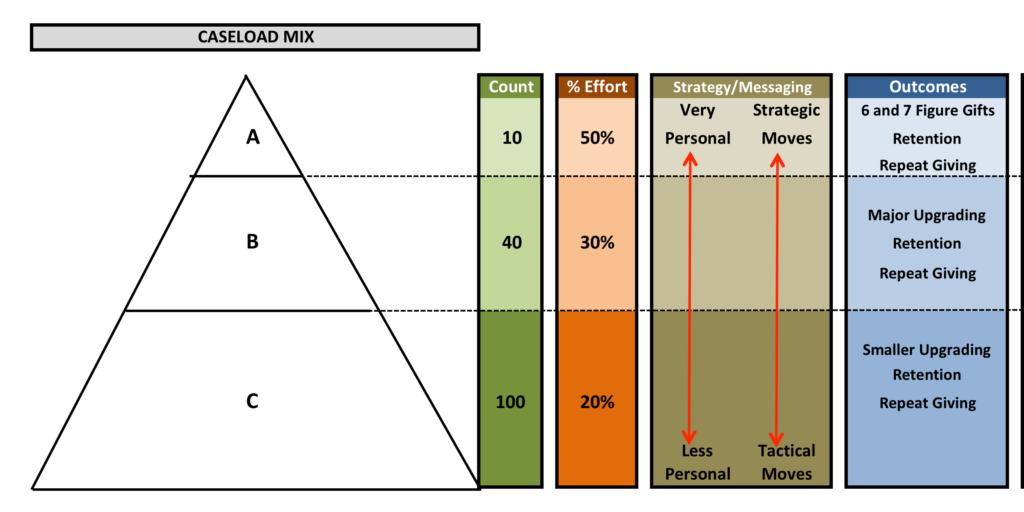Placing your donors into tiers is critical to success in arts fundraising, and a new series by Richard Perry and Jeff Schreifels at Veritus Group explain this better than any article I’ve read in a long time. (They always post terrific articles on fundraising practices, and you should follow their Passionate Giving blog if you aren’t already reading it.) Last month’s five-part series on Portfolio Management should be the first bit of required reading you assign to every new staff member in the management, development, or marketing teams of your organization. I’ve included the links to each of the articles below.
This series gives a great overview of how a development office places donor in tiers and applies specific tactics to each tier. But more than that, it explains what I think is a good basis for just how many donors each development officer should be managing and how much time should be spent on donors in each tier. My experience has been that most development staff are presented with unreasonable expectations about how much money they should raise relative to how many donors they have to raise it from. This leads to some of the near-constant turnover in development teams, which ultimately hurts the organization, both in terms of staff morale and contributed revenue.
The most interesting piece for me was this:
Your C Tier donors will account for about 75 to 100 in your portfolio of no more than 150; yet they will only provide 20-25% of your total revenue. This means that spending about 20% of your time (or 8 hours a week) on this group can be justified. That is 4 working days per month, or 48 days per year. I’m mentioning this to make sure you first keep this perspective on the amount of time you should spend on this group.
Here’s thing I’ve not met a development officer yet who spends four days per month on the bottom tier donors. And while they don’t contribute the majority of the revenue, they are your best shot at increasing revenue at all, simply by reducing their attrition. The truth is, particularly in smaller organizations, these C Tier donors are the first to fall off the radar as development staff push them off until objectives with A and B Tier donors have been met. This is where using an outside firm and a good CRM system can really help keep that Tier from getting smaller each year. If you’re unsure how that might work, ask us.
That said, here’s the list to all the articles in the series:

